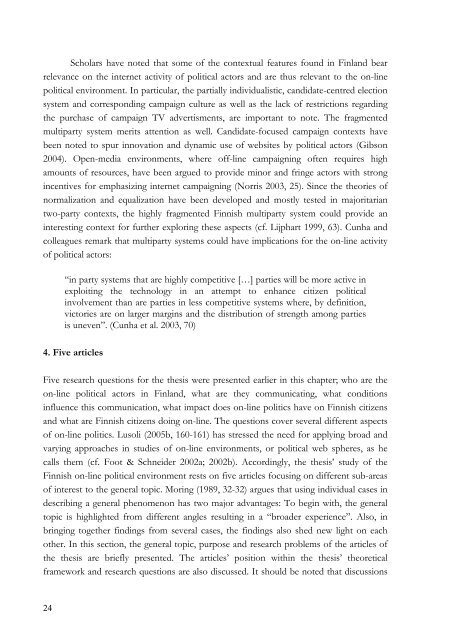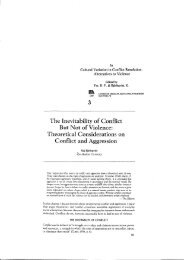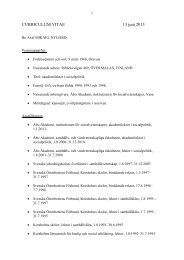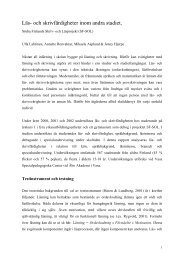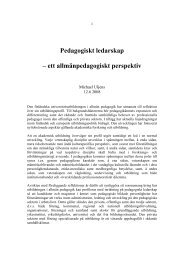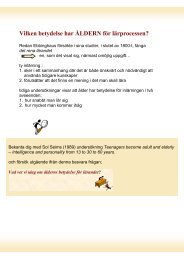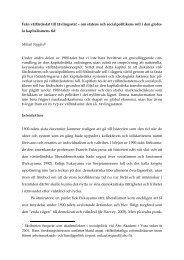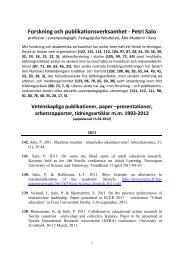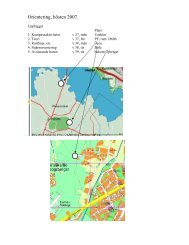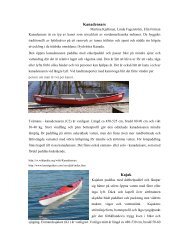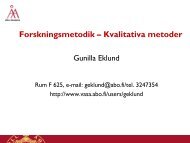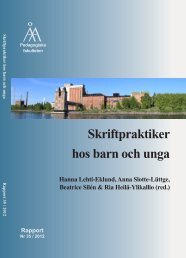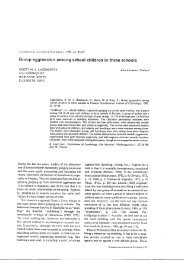Parties, Candidates and Citizens On-Line - Åbo Akademi
Parties, Candidates and Citizens On-Line - Åbo Akademi
Parties, Candidates and Citizens On-Line - Åbo Akademi
You also want an ePaper? Increase the reach of your titles
YUMPU automatically turns print PDFs into web optimized ePapers that Google loves.
Scholars have noted that some of the contextual features found in Finl<strong>and</strong> bear<br />
relevance on the internet activity of political actors <strong>and</strong> are thus relevant to the on-line<br />
political environment. In particular, the partially individualistic, c<strong>and</strong>idate-centred election<br />
system <strong>and</strong> corresponding campaign culture as well as the lack of restrictions regarding<br />
the purchase of campaign TV advertisments, are important to note. The fragmented<br />
multiparty system merits attention as well. C<strong>and</strong>idate-focused campaign contexts have<br />
been noted to spur innovation <strong>and</strong> dynamic use of websites by political actors (Gibson<br />
2004). Open-media environments, where off-line campaigning often requires high<br />
amounts of resources, have been argued to provide minor <strong>and</strong> fringe actors with strong<br />
incentives for emphasizing internet campaigning (Norris 2003, 25). Since the theories of<br />
normalization <strong>and</strong> equalization have been developed <strong>and</strong> mostly tested in majoritarian<br />
two-party contexts, the highly fragmented Finnish multiparty system could provide an<br />
interesting context for further exploring these aspects (cf. Lijphart 1999, 63). Cunha <strong>and</strong><br />
colleagues remark that multiparty systems could have implications for the on-line activity<br />
of political actors:<br />
“in party systems that are highly competitive […] parties will be more active in<br />
exploiting the technology in an attempt to enhance citizen political<br />
involvement than are parties in less competitive systems where, by definition,<br />
victories are on larger margins <strong>and</strong> the distribution of strength among parties<br />
is uneven”. (Cunha et al. 2003, 70)<br />
4. Five articles<br />
Five research questions for the thesis were presented earlier in this chapter; who are the<br />
on-line political actors in Finl<strong>and</strong>, what are they communicating, what conditions<br />
influence this communication, what impact does on-line politics have on Finnish citizens<br />
<strong>and</strong> what are Finnish citizens doing on-line. The questions cover several different aspects<br />
of on-line politics. Lusoli (2005b, 160-161) has stressed the need for applying broad <strong>and</strong><br />
varying approaches in studies of on-line environments, or political web spheres, as he<br />
calls them (cf. Foot & Schneider 2002a; 2002b). Accordingly, the thesis’ study of the<br />
Finnish on-line political environment rests on five articles focusing on different sub-areas<br />
of interest to the general topic. Moring (1989, 32-32) argues that using individual cases in<br />
describing a general phenomenon has two major advantages: To begin with, the general<br />
topic is highlighted from different angles resulting in a “broader experience”. Also, in<br />
bringing together findings from several cases, the findings also shed new light on each<br />
other. In this section, the general topic, purpose <strong>and</strong> research problems of the articles of<br />
the thesis are briefly presented. The articles’ position within the thesis’ theoretical<br />
framework <strong>and</strong> research questions are also discussed. It should be noted that discussions<br />
24


